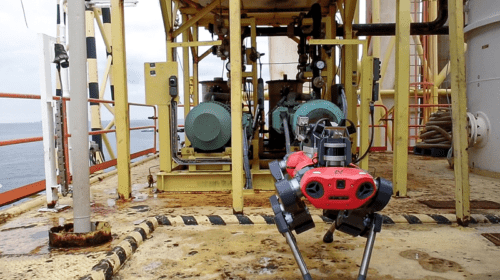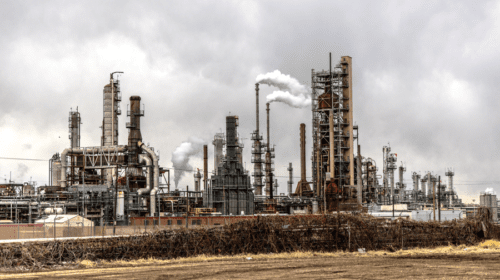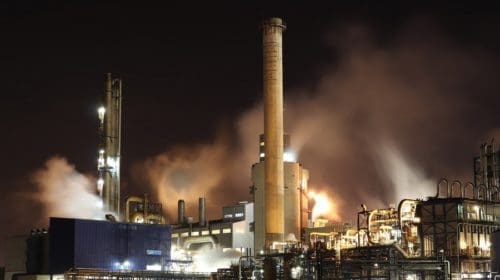People are continually interested in ways to remove carbon from the atmosphere, which would help the world meet its emissions targets. One area under ongoing research is how specific capture materials could cause meaningful progress. There’s still a long way to go in perfecting carbon capture technology, but impressive work has undoubtedly occurred.
One recent example comes from researchers associated with Lehigh University and Tianjin University. They created a hybrid sorbent that experiments suggest could absorb three times more than similar technologies. Here are the details about that achievement, as well as other work in this area.
A Hybrid Sorbent Gets Notable Outcomes in Reducing Carbon
The researchers from Tianjin University and Lehigh University created a hybrid sorbent that has a polyamine-Cu(II) complex called Polyam-N-Cu2. They intended to test the sorbent’s feasibility by studying it under ambient conditions. Their method also includes using seawater for storage, which is advantageous considering how much of the earth’s surface contains saltwater.
Their method also centers on a practice called direct air capture (DAC). The scientists noted in their paper that people began exploring DAC almost two decades ago. However, the progress has been slow, and people have struggled to make this option viable. Fortunately, these researchers believe their efforts could turn the tide, enabling a realistic and scalable way to capture materials that contribute to emissions.
Overcoming DAC Challenges
The scientists worked with commercially available resins and chemicals, then adapted a process normally used for water-based applications. CO2 is normally diluted to around 400 parts per million in the air. Up until now, carbon capture technology has required large, energy-intensive machines. Some people may see those efforts as counterproductive because as the equipment removes emissions, it also produces them.
Another obstacle associated with DAC is what to do with the CO2 after pulling it from the atmosphere. Some possibilities investigated elsewhere so far include keeping it underground or underwater in former oil wells. However, the researchers here suggest that their approach allows for transforming the CO2 into baking soda after adding some chemicals.
People could then safely store it in the ocean after that. More work must occur to verify that this approach can reliably capture materials as effectively in real life as during experiments.
Notably, one of the researchers associated with this effort wants to create a spin-off company to develop this technology further. That could be a vital step since so many aspects of this technology are novel. For example, the researchers used a copper-enriched sorbent that does not need heating to such high temperatures as other sorbents do. That’s another way this technique could save energy and prove its sustainability.
A Gap Between Current and Planned Carbon Capture Technologies
People are becoming more curious about methods to pull carbon from the atmosphere. One possibility is using gas separation membranes as part of a carbon capture strategy. However, even with advancements like those described above, progress may be slower than people would like — particularly for large-scale projects.
Data from the International Energy Agency (IEA) shows a substantial difference in the number of carbon-capture plants operating now versus those that people plan to run by 2050. A report examined carbon capture, utilization and storage (CCUS) initiatives. It indicated there are only about 35 commercial facilities in this realm, and they collectively address approximately 45 megatonnes (Mt) of CO2 per year. However, the IEA’s analysts recognize there’s more work to do to get the world on track for emissions-reduction goals.
They revealed there are plans for more than 200 more CCUS facilities to be operational by 2030. That sounds promising, and, indeed, the facilities would address 220 more Mt per year. But, a critical detail is that only about 10 projects have reached the final investment decision (FID) stage. It’s what makes funding accessible, setting the foundation for people to execute their plans.
These details illustrate why efforts to capture materials from the air only represent some of the possibilities. As people work on those, they must simultaneously explore ways to reduce the carbon dioxide in the atmosphere to remove.
Some trials began in the 2000s, such as when companies invested in and tested hydraulic hybrid trucks. Finding which options are most realistically effective could take a while.
However, the more often people try different options, the more knowledge they’ll have to put toward future projects.
What Other Ways Are People Trying to Capture Materials?
Direct air capture methods are still emerging, and they’ll likely remain that way for the foreseeable future. One collaboration between experts in new energy technologies has submitted a proposal for funding from the U.S. Department of Energy.
The hope is that participants can create a DAC location in southwest Louisiana where carbon gets pulled from the air and permanently stored underground. Besides achieving that goal, the people involved with this project say it will be a substantial job generator that stimulates the local economy.
Then, an MIT group wants to do something akin to the reverse approach of the Lehigh University and Tianjin University group. They believe it’d be more efficient to take CO2 from the ocean than the air. Their method involves membrane-free electrochemical cells. The extraction of dissolved carbon dioxide from the seawater happens with reactive electrodes that release protons to the seawater fed to the cells. The researchers believe this approach could start to address the buildup that threatens coral reefs and shellfish.
Another recent feat came from three companies that used DAC to store atmospheric CO2 in concrete for the first time. That method to capture materials involved injecting CO2 into the process wastewater at a concrete plant. Workers then used that liquid to make new concrete for various projects across San Francisco.
Carbon Capture Is Making Strides
These examples reinforce how there are numerous exciting things happening that could change how nations capture materials and meet their environmental goals. It could be years before some of the technologies here become mainstream.
However, such diverse and widespread efforts have the best chances of collectively making measurable differences and helping the world manage CO2 through carbon capture technologies that rightfully attract attention and investments.
No single solution will get the world where it needs to be. But that’s precisely why these varied efforts bring so much hope. People agree that we must do more to address CO2, and that’s an excellent starting point that will undoubtedly drive innovation over the short and long term.
Emily Newton is the Editor-in-Chief of Revolutionized, an online magazine discussing the latest industry innovations and trends.
Oil and gas operations are commonly found in remote locations far from company headquarters. Now, it's possible to monitor pump operations, collate and analyze seismic data, and track employees around the world from almost anywhere. Whether employees are in the office or in the field, the internet and related applications enable a greater multidirectional flow of information – and control – than ever before.












